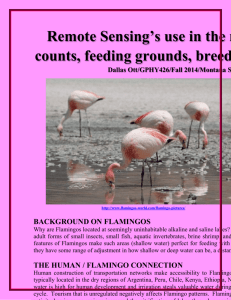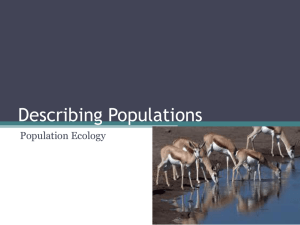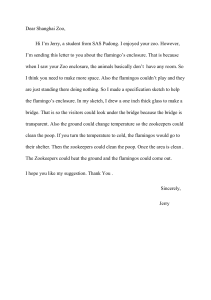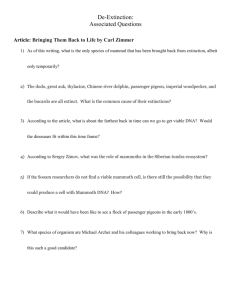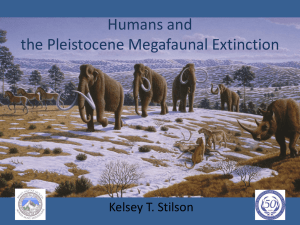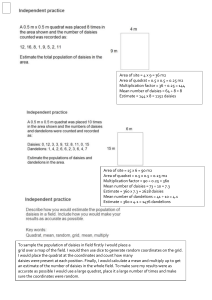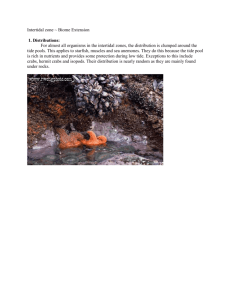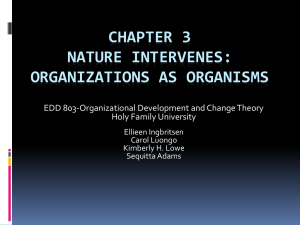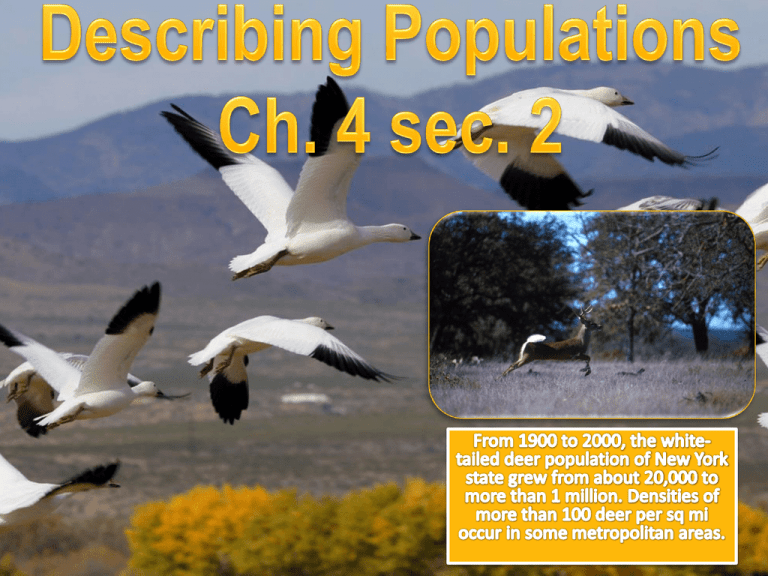
• All the members of a species living
together in the same place at the same
time.
• Ex. Daisies found in a field in Latrobe,
PA. They are NOT in the same
population as all of the daisies found in a
field in Buffalo, NY.
• Number of individual organisms present in a
specific population at a specific time.
• Size is an indicator of overall health and
changes over time can indicate success or
struggle.
• The story of the Passenger Pigeon. LINK
• Video
Did You Know? The passenger
pigeon was once North America’s
most abundant bird. Hunting
drove them to extinction in less
than 100 years.
• Number of individuals within a population per
unit area.
• High population density can be good and bad.
– The good: easy to group together, easy to find
mates, protection from predators.
– The bad: conflict, competition, disease
transmission, vulnerability to predators, etc.
• Random = no particular
pattern.
• Uniform = evenly spaced
throughout an area.
• Clumped= arranged according
to availability of resources
needed to survive.
– This is the most common pattern.
• Age structure: relative
numbers of organisms
of each age in a
population.
• Sex ratio: proportion of
males to females.
• Lack of balance in either
can cause problems.
– What issues can you
think of?
1. How is a population’s size related to its well being?
2. Which population of flamingos is most dense: 15
flamingos in a 5-square meter area, or 40 flamingos in
a 10 square meter area?
3. Paleontologists use fossils to study past life on Earth.
They have documented several times in Earth’s
history when massive numbers of species have
declined and then disappeared from the fossil record
all at once. Why do you think population ecologists
studying living organisms might be interested in these
mass extinction events?


